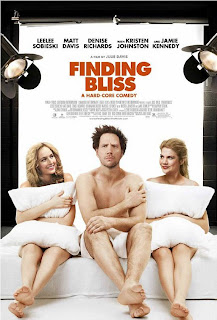Here's Darling: "Darling" a creepy, classy descent into madness
Darling (2016)
78 min., not rated (but equivalent of an R).
Eerie and stylishly designed, “Darling” is a studied pastiche that has the look and feel of a 1960s horror film, but it’s effective and unique enough in its own right to change the viewer’s mood afterwards. It is a slow-burn descent into madness that borrows from Roman Polanski’s “Repulsion” and a little bit of H.G. Clouzot’s “Diabolique,” and by and large, writer-director Mickey Keating (2015’s “Pod”) knows how to unsettle and hypnotize the viewer with his own striking, dread-filled vision and a mesmerizing, commanding turn by indie horror actress Lauren Ashley Carter.
Going by the name ‘Darling,’ a demure young woman (Lauren Ashley Carter) gets a house-sitting job to stay at a brownstone on Central Park West for its owner (Sean Young). Story has it that the last caretaker, also a young woman, threw herself off the roof, but as the owner reiterates to Darling, “this really is a lovely old home. It will take care of you.” She settles in, but when she finds a locket in one of the dresser drawers and a room at the end of a hall that must not be opened, her stay in the house forces Darling to crack.
Divided into six different chapters, “Darling” tracks the deterioration of Darling’s psyche, grabbing the viewer by the throat and plunging one into the same breaking mindset at Darling herself. Like a roller coaster cautioning pregnant women before riding, the film warns the viewer up front that it “contains flashing lights and hallucinatory images”—and for good reason. Fast becoming an exciting voice to the arthouse horror community next to Lucky McKee, Ti West and Adam Wingard, director Mickey Keating empties his entire bag of tricks over the course of a lean 78 minutes with stark confidence.
The saucer-eyed Lauren Ashley Carter (who has a face for horror after starring in 2011’s “The Woman,” 2013’s “Jug Face” and 2015’s “Pod,” which Keating also directed) has such a watchable, fascinating face, and it’s gladly in every scene. As Darling does eventually go insane, Carter’s performance erupts into histrionics, but there’s a slow process and fragility to her descent that we can’t help but buy into it. Sean Young, who co-starred with Carter in “Jug Face,” is a brief but wholly welcome presence in bookending scenes as the home owner who goes by “Madam” and always starts with, “I really shouldn’t be telling you this…,” before telling the current caretaker the fate of the last one. Also, this wouldn’t be a low-budget horror film without a requisite bit role filled by always-working Larry Fessenden.
Shot in only 12 days on digital video, “Darling” looks sharp and meticulous as ever. Handsomely precise black-and-white cinematography by Mac Fisken and Giona Ostinelli’s cacophonous, nerve-frying music score are enough to build a classical, foreboding atmosphere. With that said, it is too bad director Keating begins to fall back on too many flash cuts of screaming and other artsy indulgences. Then again, he takes a cue out of Hitchcock’s book with the use of editorial illusion when the knife-wielding Darling does away with a man she picks up. More experimental than mainstream horror viewers will be expecting, “Darling” works best as an alluring, hallucinogenic mood piece that makes its way under the skin. It feels classy even when blood is being luridly shed in a monochromatic frame.
Grade: B












Comments
Post a Comment